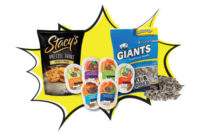Brand Packaging: COVID-19 Case Study
Pivoting to the Future
In today’s unprecedented times, it is crucial that brands have the tools to transform not only successfully but quickly.




Innovation is the antidote to overcoming seemingly impossible challenges. Smart leaders will study how some companies have adapted during the current COVID-19 crisis to learn how to implement useful marketing tools in order to quickly pivot their business to overcome any future disruptions.
To illustrate this point, below is a case study of a current client whose packaging and condiment business for the restaurant industry was disrupted due to the pandemic. When normal business basically came to a standstill, the company had to get creative and conceptualize a new product beneficial during the crisis. The company quickly pivoted to manufacturing this product and got it to market quickly. This not only avoided a financial crisis, kept the factory open, lines running and people employed, but helped an underserved community by providing it to FEMA and consumers.
The process outlined here is an approach on executing a rapid prototyping model with a nimble team; this process can be toggled up — given timing and budget to include more consumer feedback as well as more expansive creative asset creation — and toggled down to operate scrappily in unprecedented times with a smaller budget. Regardless of budget, the approach ensures that companies have insight on the major components needed to launch a new brand quickly.
Step 1. Understand the Opportunity
To start, the client had already determined what product it could manufacture on its existing lines. So, we powered through this phase by conducting cursory research on the size of the opportunity and the competitive landscape.
Step 2. Develop Compelling Proposition
Through additional desk research, we helped define the potential target audience(s), the need we would meet, and the white space that helped to differentiate the brand and deposition our competitors. We conducted extensive brand name brainstorming, which proved to be a challenge with millions of pandemic-related start-ups entering the scene daily. We cut down on costs by extensive googling of each potential name before finally putting a few “winning” ones into comprehensive trademark clearance with a legal firm. When the final name was selected, it was filed for registration with the United States Patent and Trademark Office. Corresponding to the name, a unique brand positioning and compelling brand story were developed. To reflect the brand story, we created a distinctive visual identity that included logo, font and color palette. Because we were fast-tracking the launch, we didn’t conduct consumer research, typically recommended at this stage to validate the target, concept, brand and logo, but instead moved to the next step.
Step 3. Prepare for Launch
Now, we needed to get the whole proposition ready for launch. Since speed to market was critical, there wasn’t time to invest in unique packaging structure exploration. Instead, a readily available box was selected for this particular product launch. Next, the visual identity was extended to packaging using a small selection of different graphic designs that clearly communicated the positioning and set the brand apart in the category. Instead of conducting consumer research, the client chose a design they liked. At the same time, multiple pro-formas were developed to determine what pricing and pack-out made business sense.
Channels were already in place for the brand to sell in the business-to-business arena and we determined that the fastest way to sell direct-to-consumer was through Amazon. We knew not having a brand registration for eight months would be a hurdle, so we enrolled in a new Amazon program called IP Accelerator, which required us to use a legal firm, chosen by Amazon, to register our trademark and enable us to participate in Amazon programs prior to having actual registration. If this had been a typical project, we would have created a direct-to-consumer e-commerce site that used Shopify and a third-party logistics company on the fulfillment end.
Step 4. Develop Marketing Plans and Execute
To get the Amazon store up and running, creative assets were necessary. Given the quarantine situation, we had to get creative about the photo shoot or lack thereof. Our designer did an in home photo shoot using mock-ups created from printouts. After much photoshopping, despite how scrappy we operated, the assets came out quite well. Given the circumstances, it was crucial that the same assets served multiple purposes, including social media and website development. Doing this gave the brand legitimacy and credibility if consumers tried to search for the product outside of Amazon.
The same assets were leveraged for the digital and social campaigns. Since the plan was to sell on Amazon, the majority of media dollars would be spent on Amazon cost-per-click and driving traffic to the product page. The marketing and media plans outside of Amazon were to help build awareness for the brand at launch and primarily drive to the Amazon product page. The benefit of launching on a digital platform is that the process is iterative and consists of a learning feedback loop that allows brands continuously to tweak messaging, media, product and pricing given real-time marketplace feedback.
Companies considering making the pivot to development and manufacture new products in a shortened timeframe should consider the above approach and partner with an experienced marketer who is knowledgeable in each step of the process to ensure a successful launch.
Looking for a reprint of this article?
From high-res PDFs to custom plaques, order your copy today!








